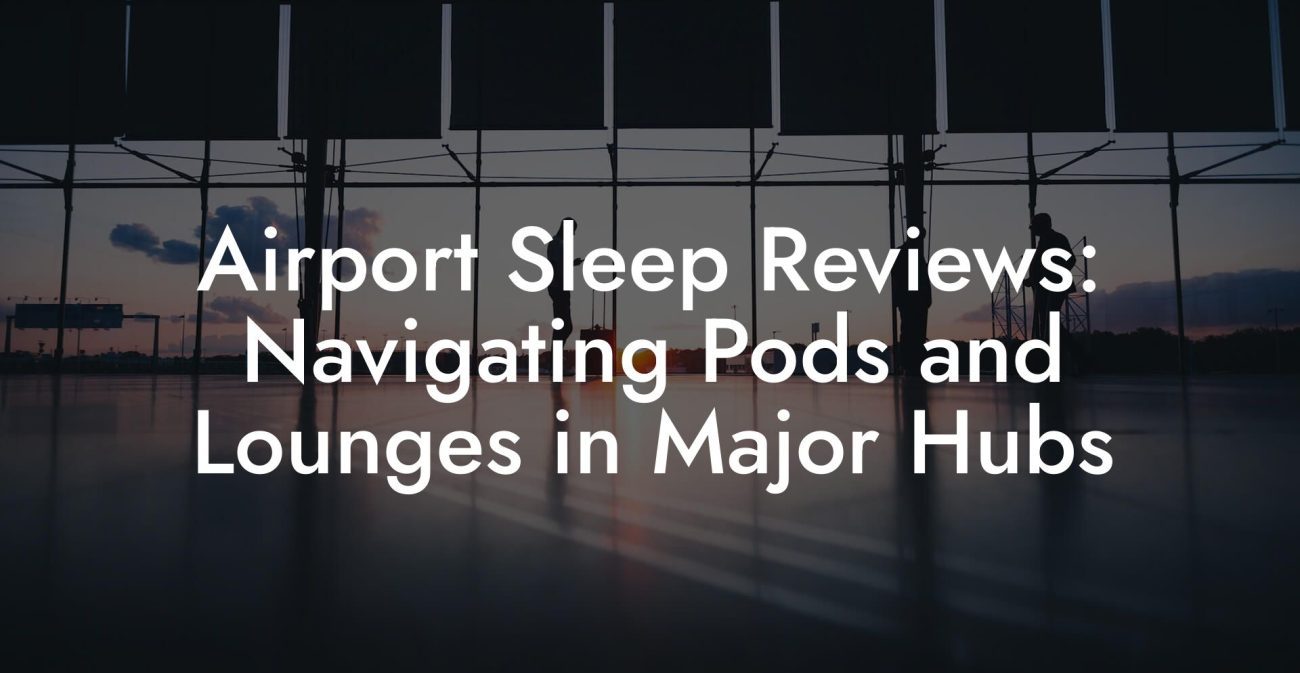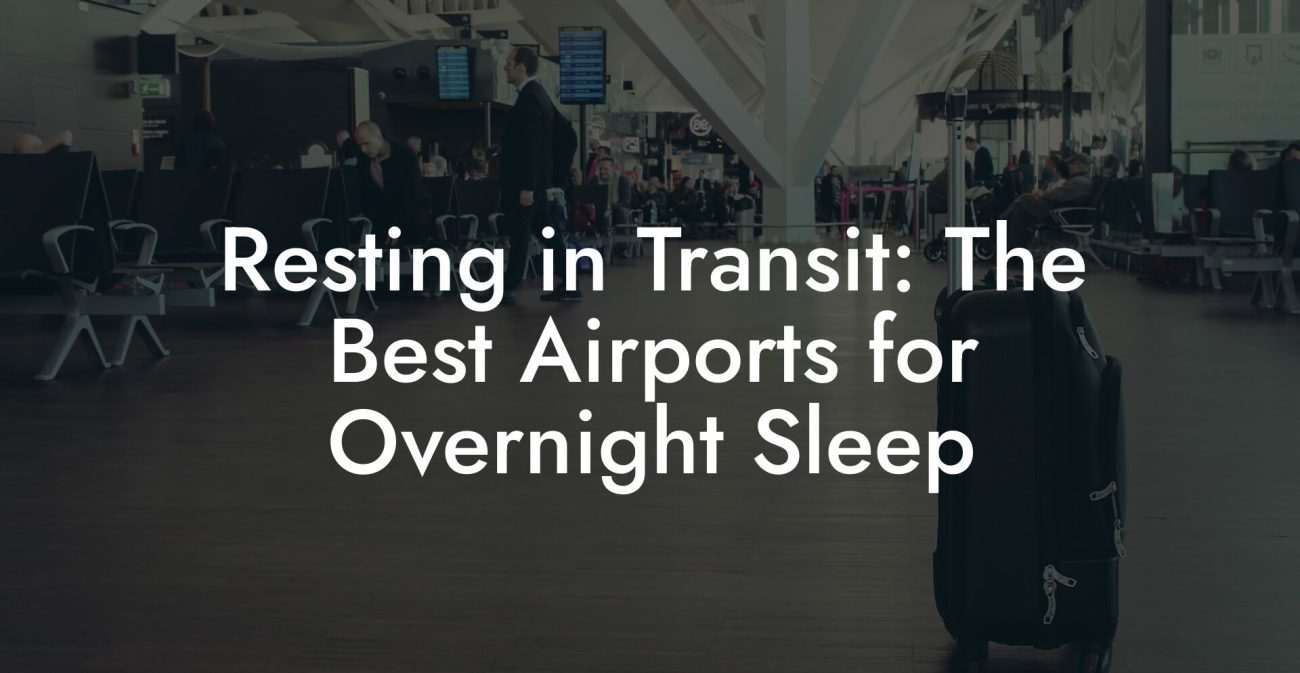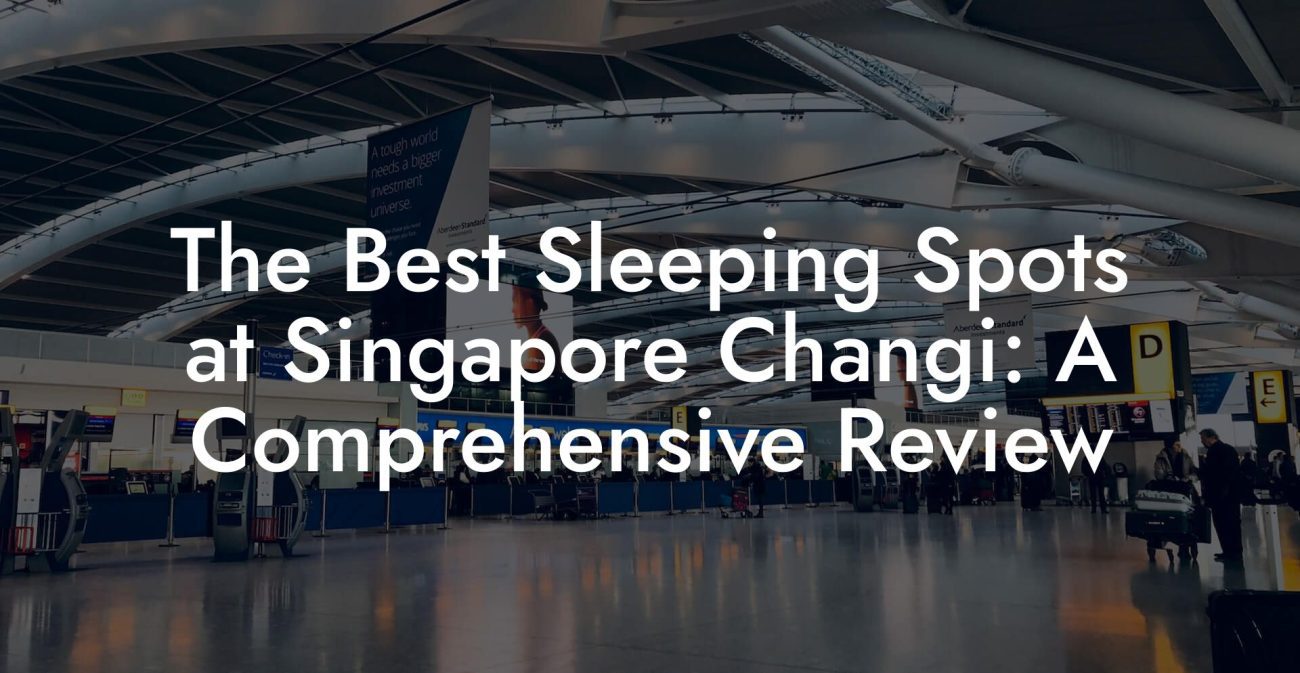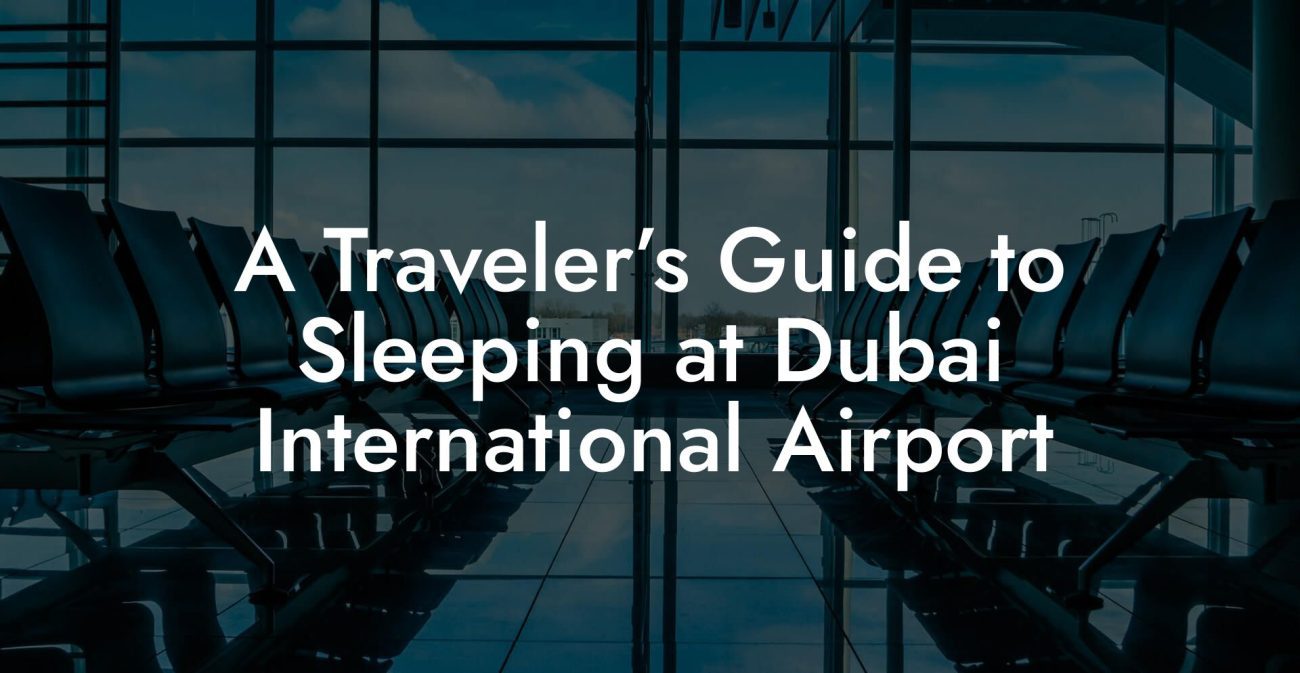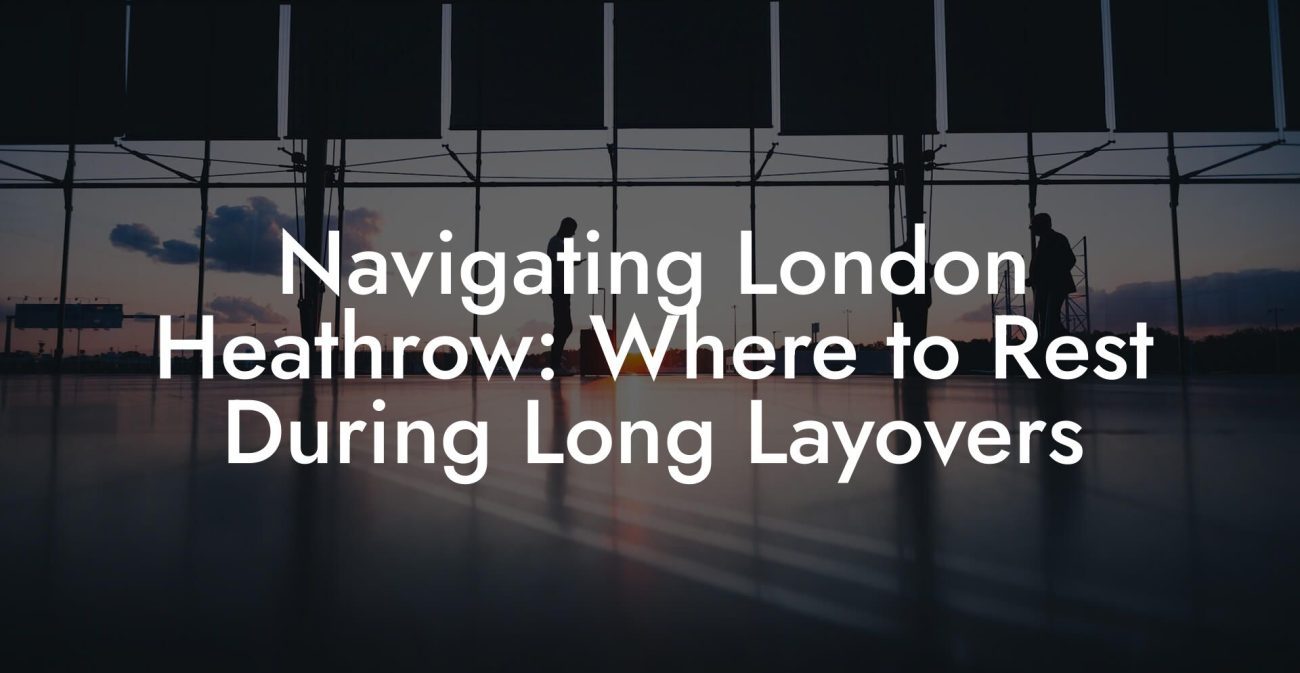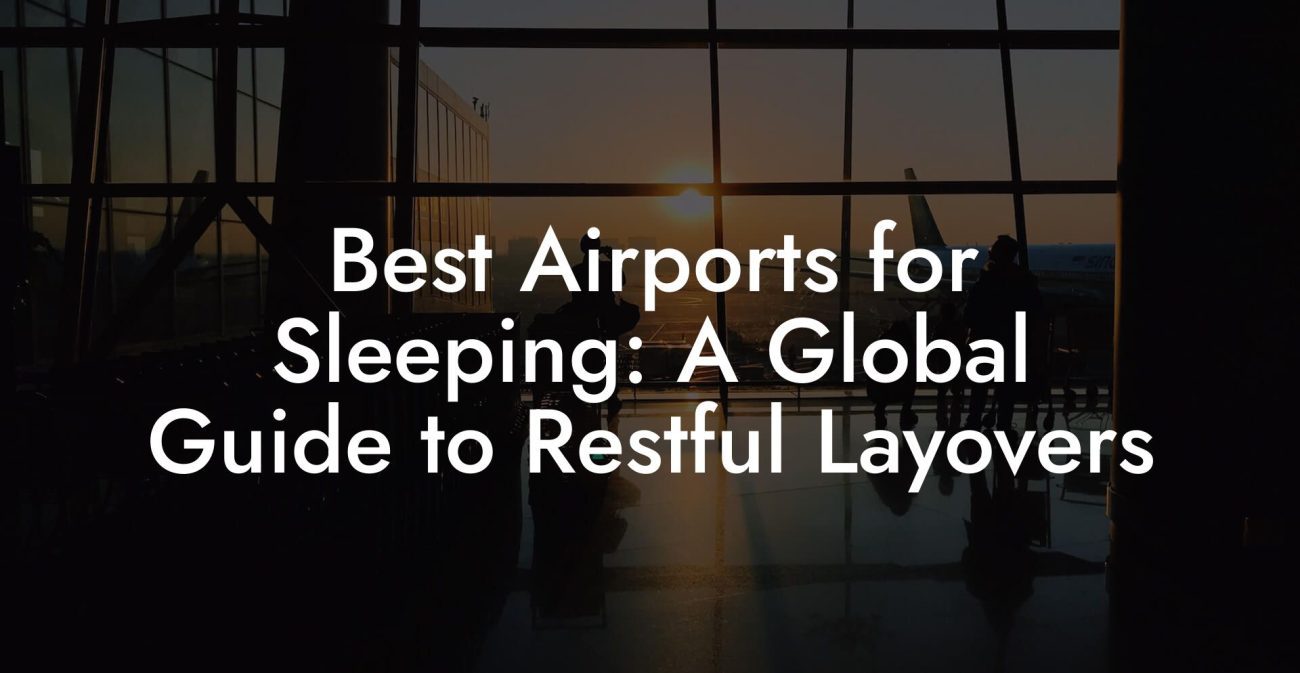Ever wondered if you could catch some zzz’s between flights while exploring the vibrant tapestry of Asia? Picture this: sleek airport sleeping pods, plush lounges, and bustling terminals that unexpectedly transform into oases of calm. Whether you’re a digital nomad hopping between Asian metropolises or a Gen‑Z adventurer chasing your next travel vibe, modern Asian airports are rewriting the rules on how you can achieve a good night’s sleep on the go.
Quick Links to Useful Sections
- Top Sleep-Friendly Airports in Asia: An Overview
- Modern Airport Amenities: Sleep Pods, Lounge Beds, and More
- State-of-the-Art Sleeping Pods
- Luxurious Lounge Beds
- Quiet Zones and Nap Rooms
- What to Expect When Sleeping in Asian Airports
- Comfort Meets Convenience
- Enhanced Security and Privacy
- High-Tech Amenities
- Inclusive Services for the Modern Traveler
- Tips for a Good Night’s Sleep in an Airport
- Plan Ahead and Reserve Your Spot
- Dress for Comfort
- Embrace Earplugs and Sleep Masks
- Hydrate, But Don’t Overdo It
- Set the Ambience
- Comparing the Best Airports in Asia for a Sleep Overhaul
- Singapore Changi Airport
- Tokyo Narita and Haneda Airports
- Incheon International Airport (South Korea)
- Hong Kong International Airport
- Kuala Lumpur International Airport
- A Gen‑Z Traveler’s Guide to Maximizing Airport Sleep
- Download the Right Apps
- Network with Fellow Travelers
- Optimize Your Digital Detox
- Embrace the Local Culture
- Real Traveler Testimonials: Case Studies in Airport Sleep
- The Changi Transformation
- Nap Nirvana in Tokyo
- Capsule Comfort in Incheon
- Resources and Community Support: Your Next Steps
- Explore Airport Sleep Apps and Websites
- Join Online Forums and Social Groups
- Subscribe to Travel Newsletters
- Local Guides and Airport Tours
- Your Journey to a Recharged, Restful Travel Experience
- Frequently Asked Questions About Airport Sleep in Asia
- Your Journey to Legendary Layovers
Top Sleep-Friendly Airports in Asia: An Overview
Asia is home to some of the best airports in the world, and they aren’t just transit hubs – they’re sleep sanctuaries designed with weary travelers in mind. Gone are the days of stiff seats and uncomfortable floors; from futuristic sleeping pods to luxurious lounge beds, the region’s top airports offer a diverse range of sleep solutions. With amenities that rival boutique hotels, these modern airports cater to everything from power naps to extended rest, ensuring that your layover could be the best part of your travel story.
Some of the frontrunners include Singapore Changi Airport, Tokyo’s Narita and Haneda, Incheon International in South Korea, and Hong Kong International. These airports combine cutting-edge technology with thoughtful design to create spaces where you can recharge both physically and mentally. Expect ambient lighting, quiet zones, and even sleep lounges that provide privacy, comfort, and a touch of luxury.
Whether you’re bouncing between time zones or simply delaying your departure, finding a quality sleeping spot can transform your otherwise mundane layover into a rejuvenating mini-retreat. Let’s dive deeper into what makes these airports a dream come true.
Modern Airport Amenities: Sleep Pods, Lounge Beds, and More
The evolution of airport design has paved the way for innovative sleeping solutions. When you step into these sleep-friendly hubs, you’re not met with a dull terminal but an environment curated for relaxation and refreshment.
State-of-the-Art Sleeping Pods
If privacy and minimal disruption are high on your priority list, consider booking a sleeping pod. These futuristic capsules are designed for solo travelers who crave isolation without sacrificing comfort. With features like adjustable lighting, charging ports, and noise-cancelling environments, these pods are perfect for a quick power nap or a more extended snooze.
Luxurious Lounge Beds
For those who prefer a little more space, several Asian airports offer reclinable lounge beds in dedicated rest zones. Think soft, cushioned surfaces, fresh linens, and an atmosphere designed for deep relaxation. These lounges come complete with complimentary refreshments and sometimes even shower facilities – an irresistible package for any millennial or Gen‑Z traveler.
Quiet Zones and Nap Rooms
Many airports have realized that a serene environment is as crucial as a comfy bed. That’s why airports like Singapore Changi have created “quiet zones” where the hustle and bustle of travel dissipates into a calming ambiance. These areas feature dimmed lighting, gentle music, and even humidity controls, ensuring that every traveler can catch a quality nap without interruptions.
Together, these innovative amenities show how airport designers have reimagined the waiting experience. They’re not merely transit points – they’re opportunities to enhance your travel wellness.
What to Expect When Sleeping in Asian Airports
When planning your sleep strategy at an airport, it’s vital to have realistic expectations. Asian airports are renowned for their efficiency, security, and impeccable service – but they’re still public spaces. Here’s a breakdown of what you might expect on your next sleep-positive layover:
Comfort Meets Convenience
One of the most appealing aspects of these sleep-friendly environments is the balance between comfort and convenience. With ergonomically designed seating that transforms into resting zones, many airports allow travelers to book a cozy spot without leaving the terminal. Whether you’re on a budget or looking for premium options, there’s something that suits every need.
Enhanced Security and Privacy
Security is a priority at any major airport, and the same goes for your sleep area. Many facilities are designed with discreet layouts to ensure minimal interference from the bustling terminal. Some airports even use smart technology that adjusts the environment based on passenger flow, offering reinforced privacy during late-night or off-peak hours.
High-Tech Amenities
Imagine a blend of technology and comfort: free Wi-Fi, USB charging ports, and on-demand entertainment systems that let you dictate the mood of your mini-retreat. Not only can you sleep better, but you can also catch up on work or stream your favorite series while resting in style.
Inclusive Services for the Modern Traveler
With the rise of remote working and digital nomad lifestyles, airport authorities are increasingly aware of the evolving traveler’s needs. From on-demand meal services and relaxation zones to family-friendly nap lounges, these airports are tailored for a demographic that values both connectivity and self-care.
In essence, while the sleeping environment of an airport might lack the charm of a five-star bed and breakfast, it more than compensates with functionality and an ambiance designed to support a dynamic, modern lifestyle.
Tips for a Good Night’s Sleep in an Airport
Whether you’re planning a long layover or simply want a quick nap between flights, these actionable tips can help you maximize your sleep quality—no matter how transient the space may be.
Plan Ahead and Reserve Your Spot
Many airports now offer online reservations for sleeping pods or lounge beds. Check the airport website or mobile app before your arrival to secure a dedicated spot and avoid the risk of missing out during peak hours.
Dress for Comfort
Pack a travel blanket, a neck pillow, and even a pair of comfy socks in your carry-on. These simple touches can make a huge difference, especially if you’re planning an impromptu sleep session in a bustling terminal.
Embrace Earplugs and Sleep Masks
Light and noise are often the enemies of quality sleep. A good pair of earplugs paired with a sleep mask can help block out distractions, letting you drift off even in a busy environment. Trust us—your future self will thank you!
Hydrate, But Don’t Overdo It
Staying hydrated is essential, but avoid overindulging before sleep since frequent bathroom trips can disrupt your snooze. Strike a balance by hydrating early in your layover and moderating beverage consumption closer to your sleep session.
Set the Ambience
Many sleeping pods and lounges allow you to adjust the lighting and temperature to suit your comfort. Take advantage of these features to create a personal sleep zone that feels snug and calming.
With these tips in mind, you’ll be better prepared to capitalize on the sleep opportunities available at Asia’s top airports, turning layovers into rejuvenating mini-retreats.
Comparing the Best Airports in Asia for a Sleep Overhaul
Each airport comes with its distinct features and quirks, so how do you choose the best one to catch some sleep? Here’s a closer look at some standout airports in Asia and what makes them sleep-friendly:
Singapore Changi Airport
Often topping global airport rankings, Changi Airport is famed for its lush indoor gardens, free movie theaters, and even a butterfly park. The sleep pods and relaxation lounges, complete with reclining chairs and ambient soundscapes, make it a haven for tired travelers. The airport’s innovative design ensures that every traveler gets a taste of serenity regardless of the terminal.
Tokyo Narita and Haneda Airports
Tokyo’s top airports have mastered the art of blending tradition with modernity. Narita offers futuristic sleeping pods and cozy lounges that feature Japanese minimalist aesthetics, while Haneda boasts quiet zones and reclining chairs perfect for a peaceful nod. Both airports are designed with cleanliness and efficiency in mind, providing an optimal environment for uninterrupted sleep.
Incheon International Airport (South Korea)
Incheon is a gateway to the Korean experience and a top contender for sleep-friendly features. With dedicated sleeping rooms, luxurious lounges, and even capsule hotels on-site, Incheon ensures that every traveler has a comfortable place to call their temporary resting spot. The seamless integration of tech and comfort makes it easy to drift into sleep despite the terminal’s vibrant atmosphere.
Hong Kong International Airport
Known for its efficiency and modern amenities, Hong Kong International Airport offers several options for getting some sleep. From comfortable reclining chairs scattered throughout the terminal to premium lounges equipped with private sleeping rooms, Hong Kong’s airport provides a variety of sleep-friendly environments. With a focus on privacy and convenience, you can tailor your sleep experience to your specific needs.
Kuala Lumpur International Airport
Kuala Lumpur International is emerging as a strong competitor among sleep-friendly airports. The airport offers several rest zones with comfortable seating, reclining options, and thoughtfully designed quiet areas. Its blend of modern technology and local hospitality provides an ideal setting for a restful pause during your travels.
This head-to-head comparison showcases how each airport is distinctly designed to support quality sleep while in transit. Whether you’re a frequent flyer or a traveler looking to make the most of a long layover, these airports have set the bar high for comfort and convenience.
A Gen‑Z Traveler’s Guide to Maximizing Airport Sleep
The travel landscape is evolving with a new generation of digital nomads and social media-savvy explorers leading the charge. For many Gen‑Z and millennial travelers, the ability to catch quality sleep on the go isn’t just about comfort—it’s a lifestyle choice. Here are some insider tips to help you elevate your airport sleep game:
Download the Right Apps
Numerous travel apps can help you locate and book premium sleeping spaces in airports. Whether it’s a dedicated app for booking sleeping pods, accessing lounge deals, or even tracking real-time terminal conditions, make sure you’re equipped with the most current digital tools to optimize your travel experience.
Network with Fellow Travelers
In today’s hyper-connected world, travel communities and social media groups offer invaluable advice and real-time insights. Join discussion forums, follow travel influencers, and engage with airport-specific pages to swap tips and discover hidden sleep gems. Not only will you gain insider knowledge, but you might also find a travel buddy who shares your passion for sleep-savvy adventures!
Optimize Your Digital Detox
It might sound counterintuitive in the digital age, but taking a short break from screens can do wonders for your sleep quality. Before settling into a sleeping pod or lounge bed, dim your devices, mute notifications, and indulge in a brief session of meditation or deep breathing exercises. This digital detox can help reset your mind and prepare you for a restful sleep.
Embrace the Local Culture
While modern amenities are a major draw, don’t overlook the cultural touches that make Asian airports unique. Try sampling regional snacks in airport cafes or explore art installations and cultural exhibits in transit zones. This not only enriches your travel experience but also creates a sense of place that can ground you, making your rest feel more meaningful and integrated into your adventure.
Embracing these strategies can turn even the shortest layover into a rejuvenating pause—perfect for recharging before your next big adventure.
Real Traveler Testimonials: Case Studies in Airport Sleep
Nothing speaks louder than hearing firsthand experiences from fellow globetrotters. Here are a few inspiring stories from travelers who transformed their layover experiences into luxurious sleep breaks:
The Changi Transformation
Alex, a digital nomad from Australia, found himself stranded at Singapore Changi during a lengthy layover. Reluctant to let fatigue dictate his travel schedule, Alex booked a sleeping pod through the airport app. “The sleek design, ambient lighting, and cozy noise-cancelling features made it feel like I was in a mini spa. I woke up feeling recharged and ready to conquer the rest of my journey,” he shares. Alex’s experience underscores just how transformative a quality airport sleep environment can be.
Nap Nirvana in Tokyo
Mei, a freelance graphic designer from Taiwan, often found herself battling jet lag on her frequent trips. One rainy evening at Tokyo Narita, she decided to venture into one of the airport’s quiet zones. “With soft music playing in the background and a secluded lounge bed waiting, I managed to catch a deep, restorative sleep,” Mei explains. “The next morning, I wasn’t just awake—I felt creatively inspired and ready for my next project.” Her experience highlights why many travelers now consider airport sleep an essential part of their travel routine.
Capsule Comfort in Incheon
Raj, a tech entrepreneur from India, was initially skeptical about sleeping in an airport until he encountered Incheon International’s capsule hotels. “I was amazed by the futuristic design and the overall vibe,” Raj recounts. “The capsule hotel was like an upgrade from my usual hotel room: secure, technologically advanced, and unbelievably comfortable. It completely redefined my layover experience.” Raj’s story demonstrates that with the right amenities, even a brief sleep session can have long-lasting benefits for your energy levels and mood.
These testimonials represent just a few examples of how travelers are redefining their layovers. By rethinking airport sleep, these globetrotters have found innovative ways to rest, recharge, and embrace the journey.
Resources and Community Support: Your Next Steps
Ready to elevate your layover? There are endless resources and communities dedicated to optimizing travel sleep. Whether you’re looking to book a sleeping pod, join a travel forum, or simply gather more tips on airport comfort, here’s how to get started.
Explore Airport Sleep Apps and Websites
Numerous apps now focus on finding and booking quality sleeping solutions. Look for platforms that offer detailed reviews, real-time availability, and even discounts for loyal users. A few popular options include SleepEasy, NapFinder, and LoungeLife – each geared toward maximizing your in-airport experience.
Join Online Forums and Social Groups
Platforms like Reddit, Facebook, and dedicated travel blogs boast vibrant communities of layover warriors. These groups share honest reviews, hidden gem recommendations, and real-time updates on airport facilities. By networking with like-minded travelers, you can gain insider tips for navigating every terminal like a pro.
Subscribe to Travel Newsletters
Stay updated on the latest trends in airport amenities and travel tech by subscribing to newsletters from reputable travel sites. These updates often include detailed guides, airport rankings, and exclusive promotions for premium rest services.
Local Guides and Airport Tours
Some airports, especially in Asia, offer guided tours of their facilities. Take advantage of these opportunities to learn about the design philosophy behind your terminal and discover secret spots that are perfect for a quick nap or an extended recharge session.
These resources empower you to take control of your travel experience and transform layovers into moments of self-care, relaxation, and even adventure.
Your Journey to a Recharged, Restful Travel Experience
Transforming your travel experience starts with reimagining how you sleep on the go. In today’s fast-paced world, quality rest is not a luxury—it’s a necessity. By exploring the innovative sleeping accommodations in Asia’s top airports, you’re not just fighting off fatigue; you’re elevating your entire travel experience.
With cutting-edge sleeping pods, serene lounge beds, and smart amenities tailored for today’s dynamic traveler, each airport layover becomes an opportunity for rejuvenation. Whether you’re preparing for a long-haul flight or taking a break from your busy schedule, the blend of technology, style, and comfort offered by these airports sets a new standard for modern transit.
Think of each rest zone as a curated mini-retreat—designed specifically to support the rhythm of your journey and bolster your energy for the adventures ahead. With every deep breath, every minute of relaxation, and every moment you invest in recharging, you return to your adventure more alert, prepared, and inspired.
So, pack those earplugs, load up your favorite travel apps, and get ready to explore the best-kept sleep secrets of Asia’s airports. Your journey to a recharged, restful travel experience is just a layover away.
Frequently Asked Questions About Airport Sleep in Asia
Navigating sleep at an airport can raise plenty of questions. Here are some of the most commonly asked questions to help you make the most of your next layover.
1. What are airport sleeping pods and how do they work?
Sleeping pods are compact, private spaces designed for short-term rest. Equipped with adjustable lighting, charging ports, and soundproofing features, they provide a secure and comfortable environment for quick naps or longer sleep sessions.
2. Do all Asian airports offer sleep-friendly amenities?
While many major Asian airports are continuously updating their infrastructure to cater to traveler comfort, the range of amenities can vary. Top airports such as Singapore Changi, Tokyo Narita/Haneda, and Incheon International generally have a wide selection of sleep solutions.
3. Is it safe to sleep in an airport?
Yes, airports prioritize security and have measures in place to ensure traveler safety. Many sleep areas are located in secure zones with surveillance and on‑site staff, so you can rest assured that your sleep is protected.
4. Do sleeping pods require prior reservation?
In many cases, yes. To guarantee availability—especially during peak travel times—it is advisable to reserve your sleeping pod or lounge bed online or via the airport’s mobile app ahead of time.
5. Can I work in these sleep-friendly zones?
Absolutely. Many zones are designed with modern amenities that provide strong Wi‑Fi, charging stations, and quiet areas for focused work before you decide to rest.
6. How do I choose between a sleeping pod and a lounge bed?
Consider your personal needs. If you value privacy and a compact space for a quick nap, sleeping pods are ideal. However, if you’re looking for a bit more space with added amenities like shower facilities or refreshments, lounge beds might be the better option.
7. Are there any tips for enhancing sleep quality in an airport?
Yes—plan ahead, dress comfortably, use earplugs and sleep masks, and adjust the pod’s settings to suit your ideal sleep conditions. A little digital detox before resting can also significantly improve sleep quality.
8. Can I find sleep facilities that cater to families?
Many major Asian airports have family-friendly rest zones that provide a comfortable space for parents and children alike, ensuring everyone gets a much-needed break.
9. What additional services can I expect in these sleep zones?
Expect extras like complimentary refreshments, shower facilities, charging stations, and sometimes even access to wellness or meditation areas to help you relax fully.
10. How has technology improved the airport sleep experience?
Advancements in technology have revolutionized airport sleep—from state‑of‑the‑art sleeping pods with customizable settings, to smart booking systems ensuring you have a reserved space at a moment’s notice. These innovations have made airport sleep not only accessible but also exceptionally comfortable.
Your Journey to Legendary Layovers
Embracing a new way to travel means rethinking how downtime and rest are woven into the fabric of your journey. Asian airports now offer everything you need to transform a layover into a luxurious, restorative experience. From tech-savvy sleeping pods and serene lounge beds to an array of amenities designed for the modern traveler, these airports are setting new standards in comfort and convenience.
Whether you’re trying out a bold new travel style or simply leveraging every moment to catch your breath between adventures, let this be your guide to optimizing every minute of your downtime. With practical tips, real stories, and resources to support your quest for quality sleep on the go, you’re ready to transform every layover from a mere transit to a memorable reset.
Your next step? Take control of your travel schedule by exploring the sleep perks at your departure and transit airports, connect with a community of like‑minded adventurers, and embrace a travel experience that honors both your journey and your well‑being. The art of catching quality zzz’s is within reach—so go ahead, redefine your transit, and let every layover fuel your next epic journey.
Useful Interruption: Dive deeper into the world of airport sleeping guides with our most popular sections. If there is anything you think is missing or anything you would love for us to write about, just give us a shout.
- General Airport Sleeping Guides
- Travel Gear & Equipment Recommendations
- Regional and Airport-Specific Guides
- Airport Sleeping Pods & Reviews
- Health, Safety, and Comfort Tips for Airport Sleepers
Last week, I decided to try the world-famous "airport sleepover" experience. Imagine this: I'm lying on a bench in Terminal C, surrounded by suitcases that have seen more of the world than I ever will, and a PA system that sounds like a karaoke machine on a sugar rush. I pull out my travel pillow—which, by the way, is more like a sad deflated balloon—and declare, "Tonight, I’m the king of this terminal!"
Soon enough, fellow travelers become my unexpected audience. One guy, fresh off a red-eye, whispers, "Hey, do you think if we sleep long enough, we can catch our flight in our dreams?" I reply, "Sure, and maybe I'll even get an upgrade to first-class in my nap!" The airport lights flicker like a disco ball, and every time someone announces a delayed departure, it’s like a punchline to our impromptu stand-up routine.
As I finally drift off, I dream of a world where boarding passes are like VIP tickets to the best sleepover party ever—a party where the only baggage is the laughter you carry with you. Waking up, I realize the airport is still the same, but I now hold the honorary title of "Terminal Comedian," a title I wear with as much pride as my permanently mismatched socks!



